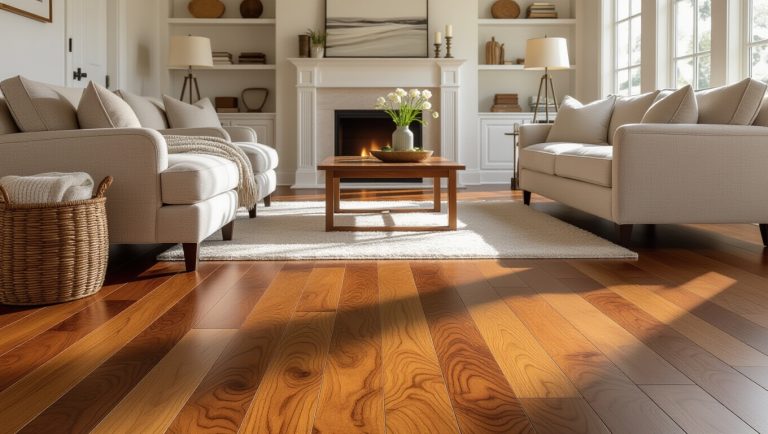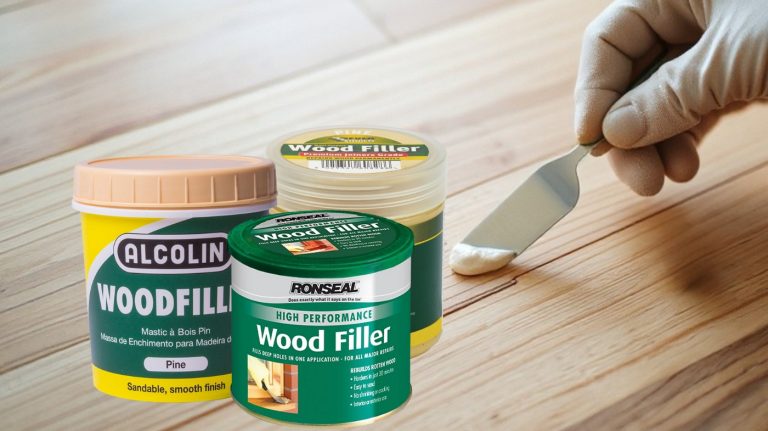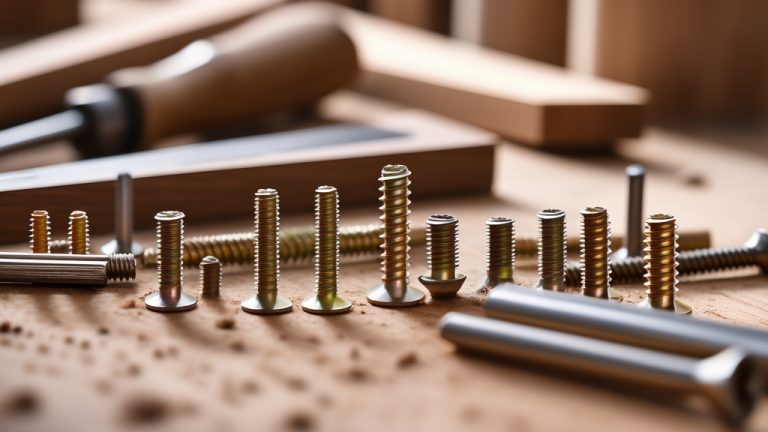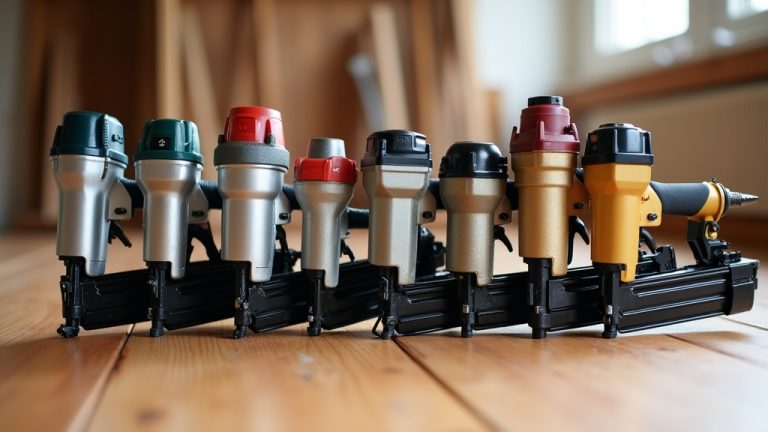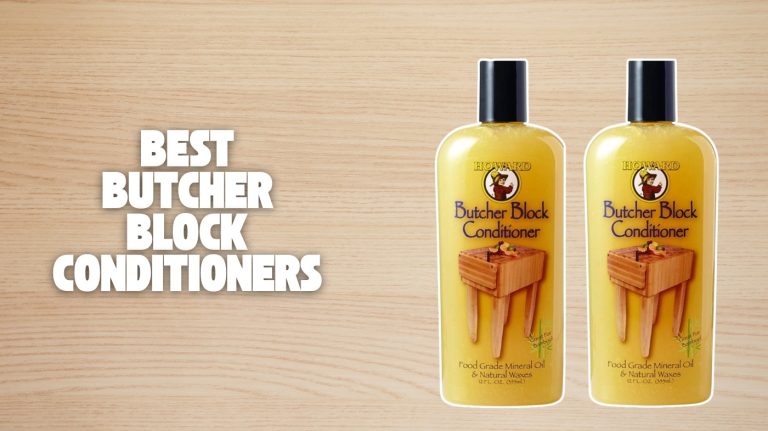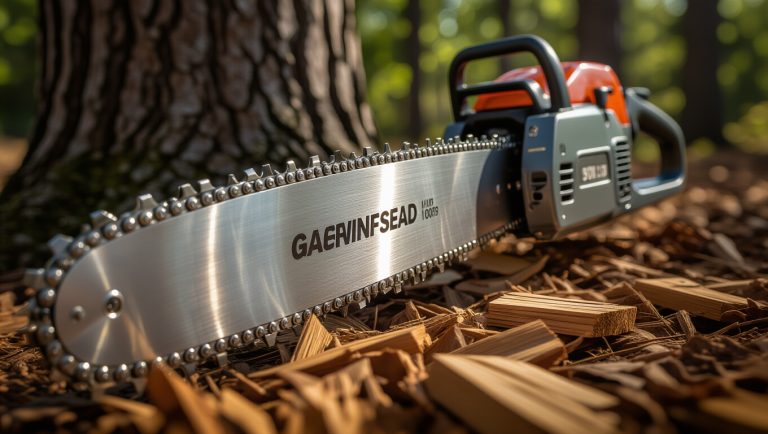If you’re looking for hardwood pellets, expect longer, cleaner burns that deliver steady heat and rich smoke flavors from woods like oak, maple, and hickory. Quality pellets have low moisture and ash, ensuring efficient cooking or heating with less residue.
Brands vary in blends and flavor profiles, so choose based on your taste and stove needs. Proper storage keeps pellets fresh and performance ideal. Discover which pellets best suit your style and needs next.
- SIGNATURE BLEND WOOD FIRED FLAVOR: The flavors of hickory, maple, and cherry hardwoods combine for…
- NOT ALL PELLETS ARE CREATED EQUAL: The best wood-fired grill on the market demands the best wood…
- TRAEGER HAS SPENT YEARS DEVELOPING THE PERFECT PELLET: Our hardwood’s unique compact cell structure…
Key Takeaways
- Hardwood pellets from dense woods like oak burn longer and produce steady heat with low ash, ideal for consistent warmth and efficient combustion.
- Premium pellets (grade A1) have low moisture (<6.5%) and ash (<1%), ensuring cleaner burns and reduced stove maintenance.
- Top brands like Traeger and Pit Boss offer hardwood blends with distinct smoke flavors, enhancing food taste from mild sweet to bold smoky profiles.
- Hardwood pellets typically deliver 8,000–8,500 BTU/lb, burning slower than softwoods but providing prolonged heat and a lasting ember bed.
- Proper storage in dry, cool, and airtight conditions preserves pellet quality, preventing moisture damage and maintaining consistent burning performance.
Types and Grades of Hardwood Pellets
When choosing hardwood pellets, it helps to understand the different types and grades available, as these directly impact your stove’s performance and maintenance.
Hardwood pellets come mainly from dense species like oak and maple, burning slower for longer heat, usually 5–10 hours more per load than softwoods. Their ash content typically remains below 1%, which is critical for maintaining clean combustion and reducing residue.
Selecting pellets with proper moisture and ash levels also helps to prevent surface scratches and damage to the stove components. Hardwood pellets from dense species like oak and maple burn slower, providing 5–10 extra hours of heat per load.
Look for pellets with low moisture, ideally under 5%, and minimal bark to reduce ash buildup. Grades range from premium A1, made from clean mill residues with ash under 1%, to utility-grade B, which contains more bark and results in higher ash.
Premium pellets burn cleaner, produce less residue, and extend stove life. You’ll also find blends mixing hardwoods and softwoods, balancing cost and burn qualities. Knowing these differences helps you pick pellets that maximize efficiency and minimize cleanup.
Popular Hardwood Pellet Brands and Blends
When choosing hardwood pellets, you’ll find top brands like Traeger, Pit Boss, and Bear Mountain offer a range of popular wood blends such as hickory, cherry, and apple to suit different flavor preferences.
Each brand brings unique flavor profiles and burn qualities, so it’s important to match pellets to your grilling style. Many users also consider the burning efficiency of pellets to optimize cooking results.
However, be aware that pellet quality can vary widely, with some brands producing more ash and dust than others, which affects cleaning and smoke consistency pellet quality variability.
Top Hardwood Pellet Brands
Wondering which hardwood pellet brands deliver the best flavor and performance for your grilling or smoking needs? CookinPellets stands out with 100% heartwood hardwoods, no fillers, and verified composition, though they come at a premium price.
Pit Boss offers a broad selection of classic flavors like hickory and cherry, burning hot and clean, all at a reasonable cost. Choosing the right pellet type can significantly affect the burn time and flavor quality.
Bear Mountain Premium impresses with minimal sawdust and consistent pellets, ideal for extended cooks. Energex is known for a long, hot burn with low ash and no clinkers, making cleanup easier.
Flame Genie FG-P20 provides a super clean, slow burn with low moisture and allergy-friendly properties. Most brands package their pellets in 20 or 40-pound bags, letting you choose according to your usage and storage needs, which is important to maximize shelf life.
Popular Wood Blends
Choosing the right hardwood pellet blend can elevate your grilling and smoking experience by matching smoke flavors to your recipes.
Popular blends like CookinPellets 40PM Perfect Mix combine hickory, cherry, maple, and apple for versatile use, while Bear Mountain BBQ Gourmet Blend features oak, hickory, maple, and cherry hardwoods without additives.
Many top brands also emphasize moisture content control to ensure optimal burn quality. Pit Boss Spring Blend offers a mild, fruity profile ideal for poultry and seafood. Select pellets with low moisture content to ensure a clean burn and avoid soggy food.
You’ll find blends balancing bold woods like hickory with sweet fruitwoods such as cherry and apple, often smoothed by maple and stabilized with oak or alder for consistent burn. Proper storage and moisture testing are essential to maintain pellet performance and flavor.
Most brands avoid fillers and bark, ensuring pure hardwood content. Packaging ranges from convenient large bags to sampler sizes, letting you test before committing. Local sourcing and sustainability are common priorities among top brands.
Brand Flavor Profiles
Although hardwood pellets share common roots, each brand offers a unique flavor profile that can significantly affect your smoking results.
Traeger provides balanced, versatile flavors like hickory’s rich bacon notes and apple’s mild sweetness, suitable for various meats. These classic woods are recommended for initial use, making Traeger a great choice for beginners. Maintaining clean equipment and proper moisture levels ensures optimal pellet performance and smoke quality.
Pit Boss features bold hickory and pecan, giving a nutty, hearty smoke that’s consistent and not overpowering. Using pH-neutral cleaning methods helps preserve pellet smokers and prevents damage from harsh chemicals.
Weber’s SmokeFire Lumberjack blend is robust, making it ideal if you want intense smoke and a great bark on brisket. BBQGuys emphasizes clean, well-balanced smoke from quality hardwoods, perfect for both beginners and pros.
For a strong, pure smoke, Jealous Devil’s premium pellets deliver bold, intense flavors favored in specialty smoking. Your choice depends on how pronounced and nuanced you want your smoke profile to be.
Hardwood Pellet Flavor Profiles and Uses
When you select hardwood pellets for smoking, understanding their flavor profiles can dramatically elevate your cooking. Different pellets suit different dishes, so choosing the right one enhances taste and texture.
Here’s a quick guide:
- Sweet pellets like apple, cherry, and maple add mild sweetness, perfect for poultry, fish, and vegetables.
- Bold smoky pellets such as hickory and mesquite deliver strong smoke ideal for beef and pork but can turn bitter if overused.
- Nutty pellets like pecan offer subtle vanilla undertones, great for slow-cooked meals.
- Balanced blends combine woods to create versatile, harmonious flavors, working well across many foods. It is important to select pellets that are 100% natural hardwood without additives or fillers to ensure clean smoke and pure flavor.
- Gourmet Blend BBQ Flavor: Take your grilling to another level by using this pack of Gourmet blend…
- Low Moisture: Enhance your grilling flavor with these smoker pellets that are low in moisture…
- Well-Balanced Flavor: All Natural BBQ pellets add a sweet flavor to your favorite grilled dishes
Hardwood vs Softwood Pellet Characteristics
When choosing between hardwood and softwood pellets, you’ll notice softwood usually delivers higher heat output and ignites faster thanks to its resin content. However, softwoods can cause more buildup in pellet stoves, requiring regular maintenance of the burn chamber area.
Hardwood pellets, on the other hand, burn longer due to their denser composition. This provides steady warmth over time. Understanding how wood density affects burn duration and heat can help you pick the best pellet for your heating needs.
Additionally, hardwood pellets tend to be more expensive, reflecting their superior quality and wood type.
Heat Output Comparison
How do hardwood and softwood pellets compare in delivering heat? Softwood pellets typically generate between 8,500 to 9,000 BTU per pound, outperforming hardwood pellets, which average 8,000 to 8,500 BTU. This difference stems from softwood’s higher resin content, boosting energy output.
Choosing the right pellet type also involves considering environmental factors such as moisture content and storage conditions. However, hardwood pellets are denser, delivering more heat per pellet volume despite lower BTU per pound.
Consider these factors when choosing:
- Softwood’s higher BTU per pound means less overall pellet consumption.
- Hardwood’s density offers sustained energy release and steady flame.
- Softwood pellets produce brighter flames and less ash, easing maintenance.
- Your appliance’s pellet feed measurement (weight vs. volume) impacts fuel efficiency.
Additionally, maintaining a moisture content below 8% is crucial for optimal pellet performance regardless of wood type, ensuring efficient burning and heat output. This moisture content control helps maximize heating efficiency.
Burn Duration Differences
Although softwood pellets ignite faster due to their higher resin content, hardwood pellets burn longer thanks to their greater density and lower moisture levels.
You’ll notice hardwood pellets create a lasting ember bed, producing steady heat over extended periods, ideal if you want consistent warmth without frequent refueling. Choosing fuel with the right material durability can significantly impact performance and lifespan.
Softwoods flare up quickly, delivering intense heat but burning out sooner. Keep in mind that hardwood pellets tend to produce more ash, which might require more frequent cleanups but helps maintain stable combustion. This higher mineral content in hardwood contributes to increased ash production.
While some high-quality softwoods can rival hardwood burn times, hardwoods generally outperform in duration. When choosing pellets, consider your appliance and heating needs: softwoods suit quick, high-heat uses, while hardwoods excel in applications demanding steady, long-lasting warmth.
Wood Density Impact
Understanding why hardwood and softwood pellets burn differently starts with looking at their wood density. Hardwood pellets, made from denser woods like oak and maple, burn slower and produce longer-lasting heat.
Softwood pellets, from lighter woods such as pine and spruce, ignite faster due to higher resin content and lower density. Here’s what you should know:
- Hardwood pellets have higher density, lower moisture, and resist airflow, resulting in steady, prolonged combustion. This density difference often requires leveling surfaces in pellet manufacturing to ensure consistent pellet quality.
- Softwood pellets burn hotter initially, aided by better airflow and more resin, but don’t last as long. They also produce less ash content, reducing how often you need to clean your stove.
- Despite compression during manufacturing, hardwood pellets remain denser, affecting burn rate and ash production.
- Softwood pellets generally produce less ash and crackle more due to their composition and combustion style.
Quality Factors Influencing Hardwood Pellet Performance
When you choose hardwood pellets for your stove, several quality factors directly impact their performance and efficiency. Key factors include heat output, moisture content, ash production, durability, and visual consistency.
High BTU pellets with moisture under 6.5% burn hotter and cleaner, while low ash content means less cleaning and longer stove life. Durable pellets resist breaking, ensuring steady feeding and air quality.
Plus, uniform size and color reflect strict manufacturing, enhancing burn consistency. Proper moisture levels are essential for optimal pellet combustion and stove efficiency. Using certified pellets also ensures sustainability and safety, reducing environmental impact.
| Factor | Why It Matters |
|---|---|
| Heat Output | More warmth, less fuel use |
| Moisture | Efficient burn, less smoke |
| Ash Content | Easier maintenance, longer stove life |
| Durability | Reliable feed, less dust |
| Appearance | Consistent burn, fewer contaminants |
Price, Availability, and Purchase Considerations
How much should you expect to spend on hardwood pellets, and what factors influence their price and availability? Prices generally range from $200 to $400 per ton, averaging around $250.
Expect hardwood pellets to cost between $200 and $400 per ton, with an average price near $250.
Smaller bags cost more per pound but offer convenience, while bulk orders lower unit prices but add delivery fees of $50–$120. The type of pellet, such as hardwood pellets, often commands a higher price due to its longer burn time and lower ash production.
Availability varies regionally due to local wood by-product supply, and pre-season buying often ensures better prices and stock. Consider these key points before purchasing:
- Bulk buying saves money but needs dry, secure storage to keep pellets quality intact.
- Delivery fees and minimum order sizes affect overall cost and flexibility.
- Regional supply affects availability, so check local retailers early.
- Seasonal purchases can reduce costs but require advance planning for storage.
How to Choose the Right Hardwood Pellets for Your Needs?
Because hardwood pellets vary widely in flavor, quality, and performance, choosing the right ones depends on your specific needs—whether you’re smoking food, heating your home, or grilling. If you’re smoking, pick pellets based on wood species: hickory offers bold smoke, while apple or cherry adds mild sweetness.
For grilling, blends like hickory-cherry-maple provide balanced flavor. When heating, focus on pellets with low ash (under 0.5%) and moisture (below 8%) content for cleaner, efficient burning and less maintenance. Using pellets with less than 1% organic ash significantly enhances stove performance.
Premium pellets made from single hardwood species like oak or maple burn cleaner and produce more consistent heat. Also, guarantee food-grade pellets if cooking to avoid additives. Matching pellets to your application maximizes flavor, heat output, and cost-effectiveness.
Tips for Storing and Maintaining Hardwood Pellets
To keep your hardwood pellets fresh and efficient, store them in a cool, dry place away from moisture and heat sources. Proper storage prevents pellets from absorbing moisture, which causes crumbling and poor burn quality.
Follow these tips to maintain pellet integrity:
- Store pellets indoors on raised pallets or shelves to avoid floor moisture and ensure good ventilation. This method helps in maintaining a clean, dry, airtight container environment essential for pellet longevity.
- Keep pellets in airtight containers or sealed bags, labeling them with purchase dates for easy rotation.
- Regularly inspect pellets for mold, dampness, or damage, and discard any compromised fuel promptly.
- After use, clean stove hoppers and perform burnoff routines to prevent residue buildup and jams.
Frequently Asked Questions
Can Hardwood Pellets Be Used Safely in All Pellet Stove Models?
You can’t use hardwood pellets safely in all pellet stove models. Only stoves designed specifically for pellets handle them properly, as size, feed rate, and combustion vary.
Check your stove’s manual to see if hardwood pellets are recommended. Using the wrong pellets risks feed issues, poor burning, or damage. To stay safe and efficient, stick with the pellet types your stove manufacturer approves and keep pellets dry and clean.
What Environmental Impacts Result From Hardwood Pellet Production?
When you choose hardwood pellets, you’re also engaging with a complex environmental story. Their production quietly reshapes forests by encouraging large-scale tree harvesting and replacing diverse woods with single-species plantations.
This can reduce wildlife habitats and biodiversity. Plus, the process releases pollutants and greenhouse gases, affecting air quality and climate.
Are Hardwood Pellets Biodegradable or Recyclable After Use?
Yes, hardwood pellets are biodegradable since they’re made from natural wood residues that break down with moisture and microbes. After you burn them, the leftover ash isn’t recyclable as pellets but is often reused as a nutrient-rich soil amendment.
While you can’t recycle unburned pellets easily, their biodegradability encourages composting. So, you benefit both from eco-friendly disposal and from recycling the ash to support soil health.
How Do Weather Conditions Affect Hardwood Pellet Storage?
Think of weather as a sneaky thief stealing your pellets’ quality. When humidity climbs, your pellets absorb moisture, clumping and crumbling like wet sand. Excess heat or cold can warp their structure and lower energy output.
You’ll want to store them indoors, in dry, ventilated spaces, using airtight containers to block moisture and temperature swings. Keep an eye on stock and rotate it regularly to stop weather from sabotaging your fuel supply.
What Is the Typical Lifespan of Hardwood Pellets Once Opened?
Once you open hardwood pellets, they typically last up to a year if you store them in a dry, airtight container. If exposed to humidity above 10%, their life drops to just 3–6 months.
To keep them fresh, avoid moisture and temperature swings. Check regularly for crumbling or a musty smell. These signs mean it’s time to toss them. Proper storage really extends their usability and performance.
Finding the Best Pellets for Your Cooking or Heating Needs
Choosing the right hardwood pellets is like picking the perfect seasoning for a signature dish. It can make all the difference in flavor and performance. Just as a chef balances spices, you’ll want to evaluate types, quality, and storage to get the best burn and taste.
Keep your pellets dry and fresh, and you’ll enjoy a smoky masterpiece every time. With thoughtful choices, your pellet experience will be as satisfying as a well-crafted meal.
- Natural Hardwood Pellets: Premium quality pellets for smoker grill are crafted to infuse your BBQ…
- Perfect Mix: Exclusive mix of the 4 most popular hardwood pellets like hickory, cherry, hard maple,…
- Rich & Smoky: Cooking pellets contain only a natural hardwood blend famous for its rich smoky…
Last update on 2025-11-19 / Affiliate links / Images from Amazon Product Advertising API




